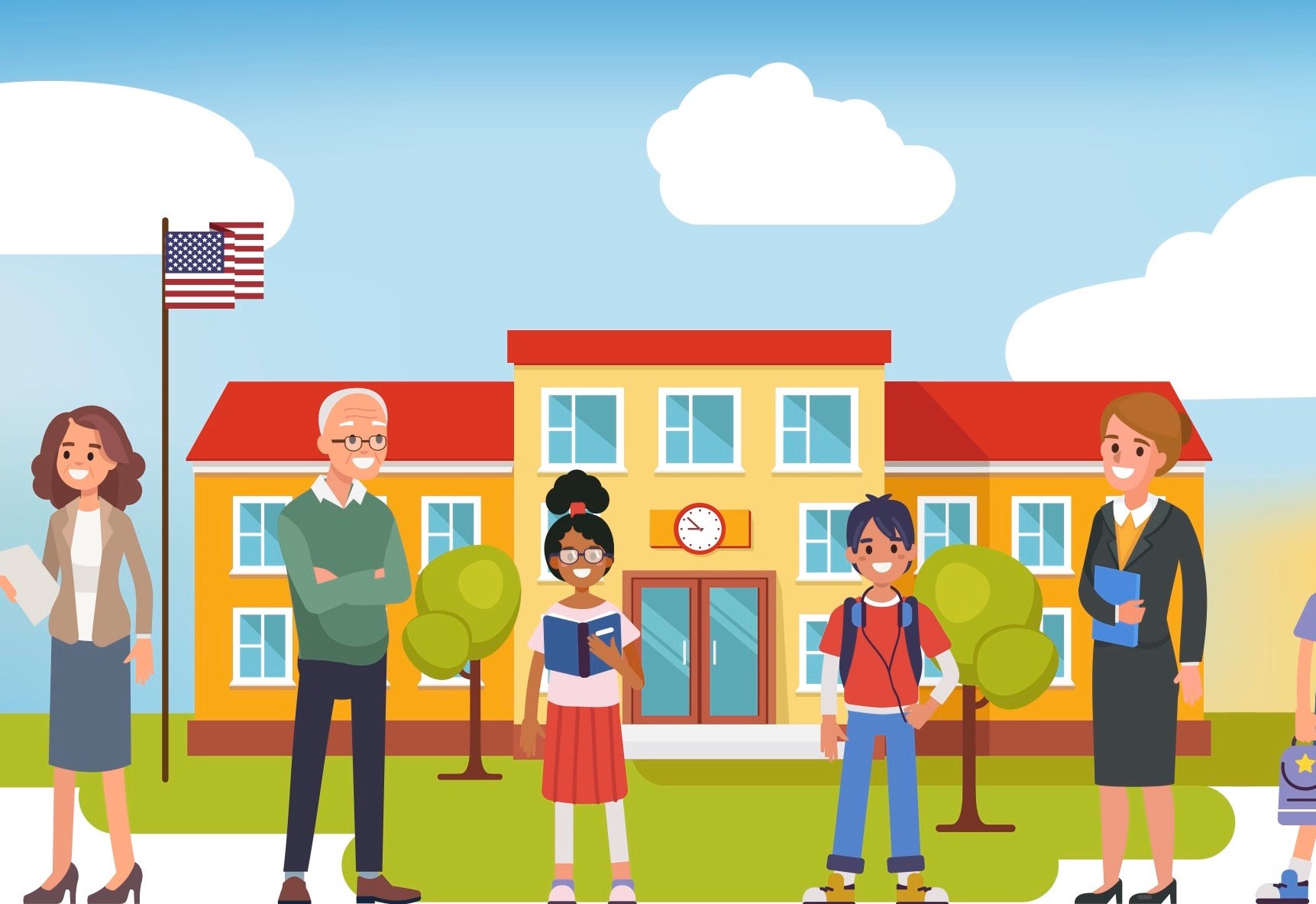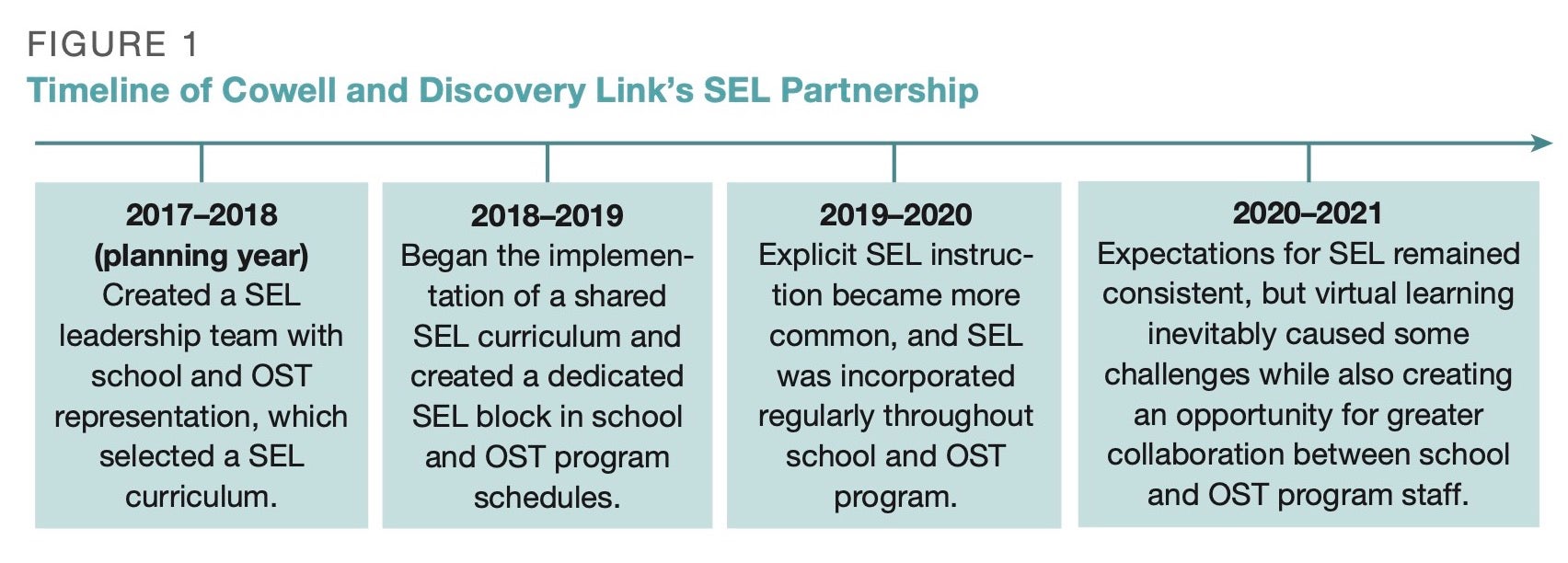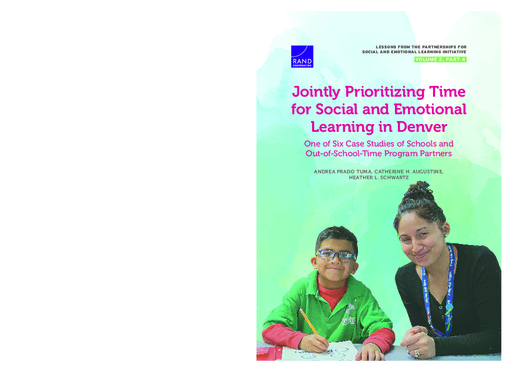
Breadcrumb
- Wallace
- Reports
- Jointly Prioritizing Time For So...
Jointly Prioritizing Time for Social and Emotional Learning in Denver
One of Six Case Studies of Schools and Out-of-School-Time Program Partners

- Author(s)
- Andrea Prado Tuma, Catherine H. Augustine, and Heather L. Schwartz
- Publisher(s)
- RAND Corporation
- DOI Link
- https://doi.org/10.7249/RRA379-7
Summary
How we did this
Researchers drew on a variety of data for this case study of a partnership between Cowell Elementary School in Denver and its OST partner, the Discovery Link program.
There often is an unequal power dynamic between schools and out-of-school-time (OST) programs. The former tend to have more and better-paid staff, with less turnover. But thoughtful and consistent collaboration can create a deeper and more equal relationship.
That’s what happened when Cowell Elementary School in Denver and its OST partner, the Discovery Link program teamed up to build social and emotional skills. The story of that effort is detailed in this case study.
Part of a Larger Initiative
The communities were participants in Wallace’s Partnerships for Social and Emotional Learning Initiative. It brought together school districts and their OST partners to develop and put in place SEL activities across learning settings.
Focusing on SEL
The school and OST program made SEL a priority by integrating social-emotional instruction and rituals into the daily routine. The two accomplished this by:
- Investing in joint planning, collaboration, and professional development about SEL
- Dedicating time for SEL in each of their respective schedules, activities, and events
- Sharing a social-emotional learning curriculum and rituals

SEL is incorporated every day into every classroom. Be that team-building time or specific SEL blocks of time, we’ve really tried to incorporate it every place that we can put it in.
— Sara Ulricksen, program director, Discovery Link, spring 2021
Fostering a Strong Relationship
At the same time, the partners took multiple steps to forge a strong collaboration. That included:
Dedicated office space. In the first year of the partnership (2017–2018), the principal provided the OST program director with a large office. That allowed her to store OST program materials and hold meetings. The move also made the OST program director feel valued by the school.
A dedicated classroom. The classroom provided a space for students during the OST program. It also served as a shared office for both the Discovery Link director and the school’s SEL lead during the school day. The OST program classroom was an important venue for collaboration between school and OST staff. It served as a space for Discovery Link staff to gather and meet with each other before the start of afterschool programming. That led to regular interactions with the school SEL lead, who was often there when OST program staff arrived.
A greater role for OST program staff in the school community. Starting in school year 2018–2019, the school hired two Discovery Link instructors as school paraprofessionals. Their new role allowed OST program staff to attend daytime school staff meetings, work with teachers, and become more familiar with classroom expectations and routines. The school also began involving OST program staff in its parent engagement efforts.
Accomplishments
By jointly prioritizing social and emotional learning, the partners were able to accomplish such results as:
- Explicit SEL instruction became more frequent.
- Staff members from both the school and OST program became part of the decision-making about SEL implementation.
- School and OST program staff members developed common goals and terminology about SEL.
Key Takeaways
- A Denver elementary school and its co-located out-of-school-time (OST) partner collaborated to make social and emotional learning (SEL) a priority.
- The partners embedded SEL in practices and rituals throughout the day.
- They fostered a strong, equal relationship through such steps as providing a dedicated space for OST activities and integrating OST staff in the school community.
- There was an increase in SEL instruction and collaborative decision making.
Visualizations

Materials & Downloads
What We Don't Know
The collaboration took place in a large urban district primarily serving students from historically disadvantaged populations. For that reason, lessons learned may not apply to all elementary schools.
Researchers surveyed Discovery Link instructors each year. But, because the number of respondents was less than ten, they were unable to report on survey data from only Discovery Link respondents.









